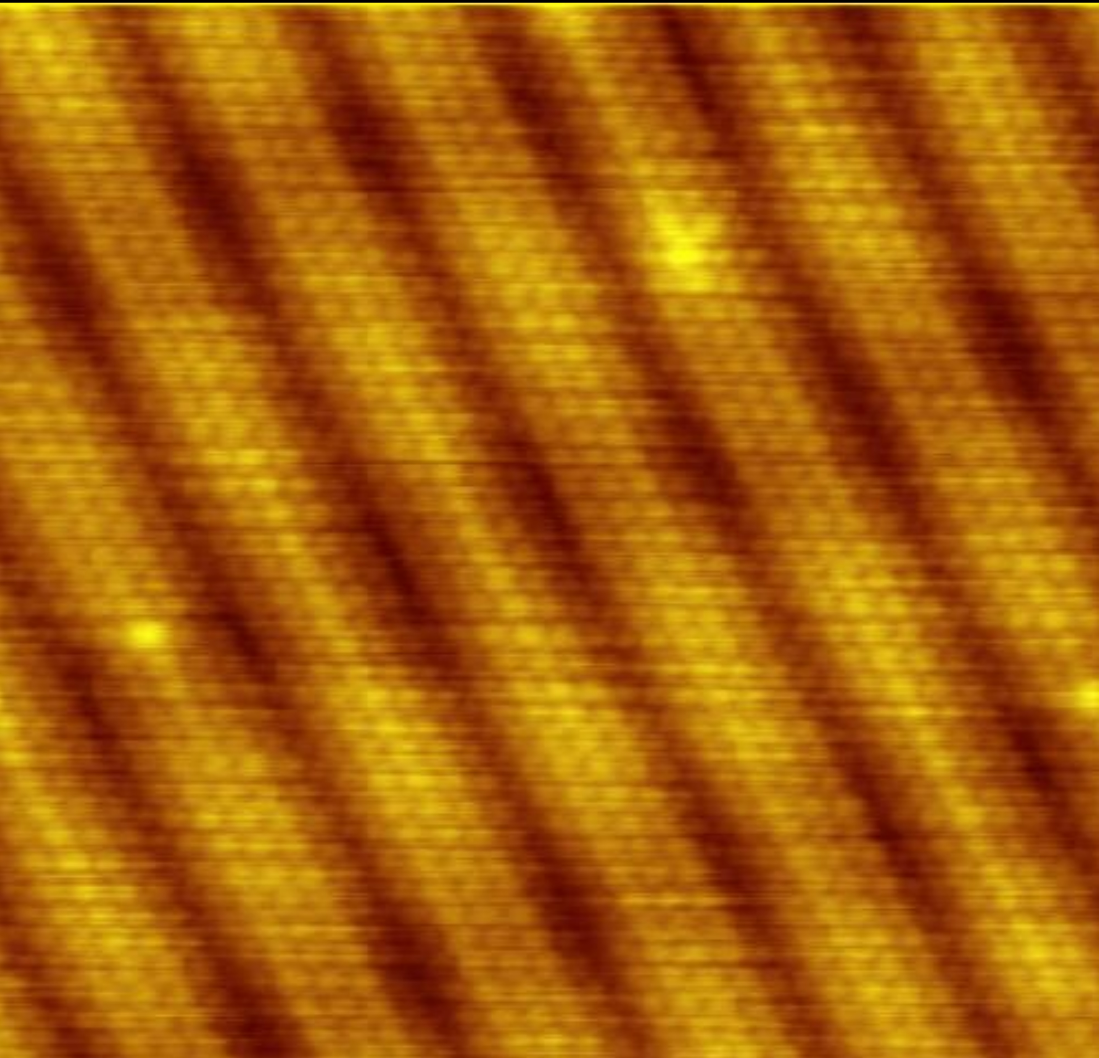This week's course content covered nanotechnology as it relates to art, medicine, and commodity production. All of these categories present great opportunities to either learn more about the atomic structure of our world or to help make human lives better (to some extent). Some of the uses for nanotech in "art and science" largely come through how we can use nanoparticles or molecules to produce structure, like through DNA folding or scanning tunneling microscopes. For medicine and commodities, we're specifically looking at solving humanity's ills of cancer, toxins, and microbials, with some intersection with commodities.
 |
| Illustration of Drexler's atomic assembly line, retrieved from Nanotech Jim pt1 - YouTube |
 |
| Image of a clean surface of Gold, through a scanning tunneling microscope, retrieved from Scanning tunneling microscope - Wikipedia |
One thing that stood out to me was the use of atomic structures to produce images, like smiley faces from Paul Rothemund's Ted presentation or Lisa's manipulation of single carbons monoxide molecules to write UCLA (process was pioneered by Don Igler). In a way, the usage of single-strand DNA to produce structured images and forms reminds me of the Drexel's vision for nanotechnology, where he believed it would be highly mechanical and an avenue for engineering. His belief in an assembly-like structure at the atomic level shares many similarities with the DNA structure production, but most prominently they share the same flaw of being inefficient for use outside art. I mean to say that, as much as these processes can produce art at a scale unimaginable to the natural human perception, it is unlikely they’ll be the catalysts for the production of more complex structures at our scale, unfortunately.
 |
| Image of DNA in the form of a smiley-face, through an atomic force microscope. Retrieved from Fun with DNA : NPR, credit to Paul Rothemund |
However, there is still significant room for use in the field of medicine, as represented in the videos. The process of using nanotechnology to reduce the toxicity of cancer treatments/medicines and cosmetics (through quantum dots) is promising. Despite this, though, it is tragic that nanotech will be abused by the food and agricultural industries to likely make food products more addictive and personalized. Hopefully, the use of nanotechnology in medicine and art will push humanity forward and the use of nanotech in commodity production, specifically food and ag, will be regulated as to not break us and our environment down.
Works Cited
Gimzewski, Jim. "Nanotech Jim pt1". YouTube, YouTube, 2012 May
21, https://www.youtube.com/watch?v=q7jM6-iqzzE&t=785s&ab_channel=UCOnline
Gimzewski, Jim. "Nanotech Jim pt4". YouTube, YouTube. 2012, May
21, https://www.youtube.com/watch?v=yHCuZetAIhk&ab_channel=UCOnline
Gimzewski, Jim. "Nanotech Jim pt6". YouTube, YouTube. 2012, May
21, https://www.youtube.com/watch?
v=oKlViSKkPd0&list=PL9DBF43664EAC8BC7&ab_channel=UCOnline
Greenfieldboyce, Nell. "Fun with DNA". NPR, 2006 March
15, https://www.npr.org/2006/03/15/5281562/fun-with-dna
Rothemund, Paul. "DNA folding, in detail" Ted, Ted Ideas Worth Spreading,
2008, https://www.ted.com/talks/paul_rothemund_dna_folding_in_detail?language=en
"Scanning Tunneling Microscope." Wikipedia, The Free Encyclopedia, Wikimedia
Foundation, 2 March 2023 last updated,
https://en.wikipedia.org/wiki/Scanning_tunneling_microscope




Johnny, you raise a great point about nanotechnology's power to cure lots of our species' greatest challenges. I especially appreciated your connecting Rothemund and Drexel's contrasting visions for nanotechnology. Keep up the great work.
ReplyDelete